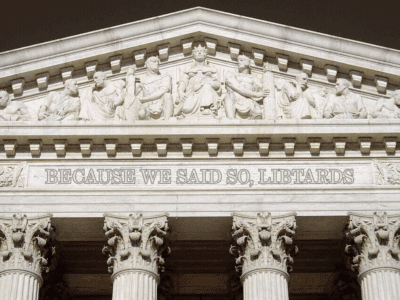Public Lands Watch: NEPA Regulations
Administration asks for ideas about how to revise regulations implementing NEPA
A key statute for public lands management is not specific to any of the federal land management agencies or any specific land categories or activities. Instead, it is a statute that applies generically to all federal government activities: the National Environmental Policy Act (NEPA). NEPA, in short, requires the federal government to thoroughly analyze significant environmental impacts of all proposed major federal actions, and to publicly disclose those impacts in an Environmental Impact Statement (EIS). It also requires the government to analyze alternatives to the proposed action.
NEPA is a fairly short statute, and the provisions that lay out the EIS requirement are even shorter. Accordingly, the implementation of NEPA is mostly articulated through regulations issued by a small agency within the Executive Office of the President, the Council of Environmental Quality (CEQ). CEQ issued a set of regulations implementing NEPA in the late 1970s (several years after the law was first passed). These CEQ Guidelines, as they are called, were revised once, in a limited way, in the mid 1980s, but no major changes have been made since. The Guidelines are extremely important because they lay out a range of important requirements for NEPA compliance by federal agencies, including issues such as:
- What determines whether environmental impacts are “significant” such that an EIS might be required?
- What kinds of procedures should agencies follow to determine whether they should or should not do an EIS? (The document that is generally done to make this determination is called an environmental assessment, or EA, which is not mentioned at all in the statute.)
- What kinds of procedures are available to agencies to identify categories of actions that are presumptively exempt from NEPA analysis requirements because they generally have minimal impacts?
- What is the scope of analyses that agencies should perform in EAs or EISs? For instance, should agencies only look at the direct impacts of actions (say, the land paved over by a highway) or at the indirect impacts of those actions (for instance, the impacts of development facilitated by the construction of a highway) or the cumulative impacts of those actions, when combined with other activities close in time and space.
- When should agencies combine analyses for multiple projects together, or separate them? Note that separating analyses for projects or stages of projects might make it easier for agencies to avoid finding significant impacts, and avoid preparing EISs.
- What process should agencies follow in preparing EAs and EISs? For instance, the CEQ Guidelines generally require public notice and comment on EISs, and sometimes for EAs as well.
Given that almost every activity on federal public lands is either initiated by, or permitted by, federal agencies, NEPA has broad applicability to these agencies’ activities. (NEPA applies when a federal agency permits private activity as well as when the agency does the activity itself.) And NEPA is often a major tool to force agencies to consider public comments, and there is good evidence that the analytic and disclosure requirements of NEPA have forced agency decisionmakers to be more cognizant of environmental impacts. Finally, and perhaps most controversially, NEPA is a frequent basis for litigation over federal agency actions, particularly by environmental groups.
The Trump Administration in June published a notice that they are considering major revisions to the CEQ Guidelines. At this point, the Administration is simply asking for ideas about how they might or might not revise the Guidelines. Any more specific proposed revisions are still to come, with another public comment period available at that stage. You can submit your ideas at https://www.regulations.gov/, using docket number CEQ-2018-0001. The deadline for comment submission is August 20 (an extension from the original deadline of July 20).
Reader Comments
One Reply to “Public Lands Watch: NEPA Regulations”
Comments are closed.






The Council ON Environmental Quality was established by Title II of NEPA. The Regulations for Implementing the Procedural Provisions of the National Environmental Policy Act became effective July 30, 1979. They replaced the previous guidelines and are most assuredly NOT guidelines since then, they are in fact regulations. In my experience it seems as if attorneys more than others want to call them guidelines. The EIS stems from Section 102(2)(c) of the NEPA statute, but its requirements are specified in the CEQ NEPA Regulations, 40 CFR Part 1502–Environmental Impact Statement. NEPA has a powerful SUBSTANTIVE mandate in Section 105: “The policies and goals set forth in this Act are supplementary to those set forth in existing authorizations of Federal agencies.” However, the courts seem to be confused or cowed concerning this part of NEPA.